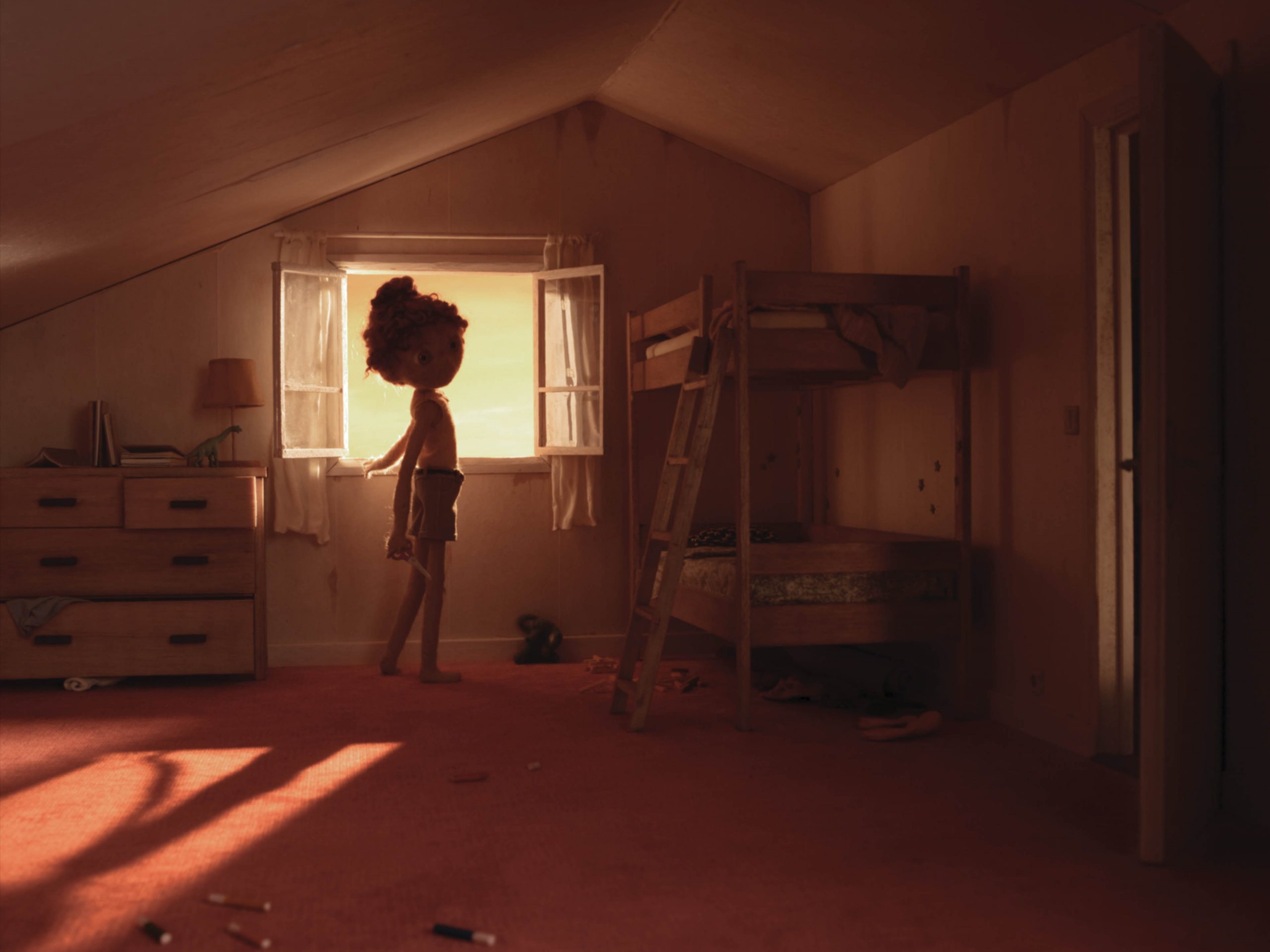Tea time with À la mer poussière [To the Dusty Sea]
Interview with Héloïse Ferlay, director of À la mer poussière [To the Dusty Sea]
What materials did you use for the bodies and for the tears, and why this choice? How many times did you try different things before you found the effect you were looking for?
My puppets’ bodies are covered in wool, the tears are made from hydroalcoholic gel before it became trendy! I love the way wool catches the light. It’s soft and diffusive but also sharp and has a piqué that’s very distinct in close-up shots. It’s extremely malleable which gives me a lot of liberty with forms, it’s light, and for A la mer poussière, I used it to express the mother’s despair and anguish. Technically, wool is a plus regarding the longevity of my puppets: for repairs, for hiding mistakes sometimes, for making mouths and eyebrows in unique shapes very quickly, and unlike modelling clay, wool doesn’t get as dirty from lots of handling. I chose to make the tears in a shiny liquid much like real tears because I needed to make them realistic in order to convey emotions, the same goes for the eyes which are very sophisticated. The film’s head of decor, Hugo Chapelon, and I agreed that very few things in the film would be shiny and that each detail that is not mat like others in the film would stand out such as the blades of Zoe’s scissors.
Was setting this family in such an isolated environment a choice you made for the storyline or was it an abstract portrayal of their crisis?
Both. This story talks about three human beings who feel absolutely alone and each one’s goal is to connect with the other two. It wasn’t suitable to place them in a setting with other social relationships, neighbors, school friends, who would interfere and perhaps upset the balance of the threesome on which I wanted to concentrate. But obviously this little lost house is also like them, an island in the desert, which is not an oasis for that matter, and whose appearance accentuates the feeling of solitude.
What interested you in the theme of sorrow and can we speak of depression in A la mer poussière?
What interested me above all was to see how three people would respond, each one differently, to a situation they shared and the enormous sorrow that they felt. Anger, apathy, or kindness. What I also enjoy is learning the different explanations that spectators find for the mother’s attitude. I didn’t have depression in mind when writing the script, but it happens to be the reason most often cited. So if you think you see depression… It’s up to you to decide.
How did you develop the audio?
In terms of the music, everything was composed by Antonin Tardy. The accident sequence, in particular, was taped before the animation and I created the animation using the music as support. For the sound effects, sound editing and mixing, once again I worked with the fabulous twosome Antoine Martin and Lucien Richardson who are always ready to propose ideas. In animation, you have to decide everything: the contact between the characters’ skin, will it make the sound of human skin or of wool rubbing together? To what extent do the glowing plankton make a sound?
What do you think the future holds for short films?
This is the format of creativity where everything is possible. I think it will continue to exist because how can you become a good director without having done shorts? But I hope there will continue to be so many festivals to screen them!
If we were to go back into lockdown, what cultural or artistic delights would you recommend for alleviating our boredom?
The excellent comic book C’est comme ça que je disparais by Mirion Malle which does in fact talk about depression, as well as Baume du Tigre by Lucie Quéméner which addresses complex family relationships with remarkable gentleness. But above all, my advice is to nourish yourself with culture and, if possible, keep some spare time for getting bored.
À la mer poussière [To the Dusty Sea] is being shown in the National Competition F10.









